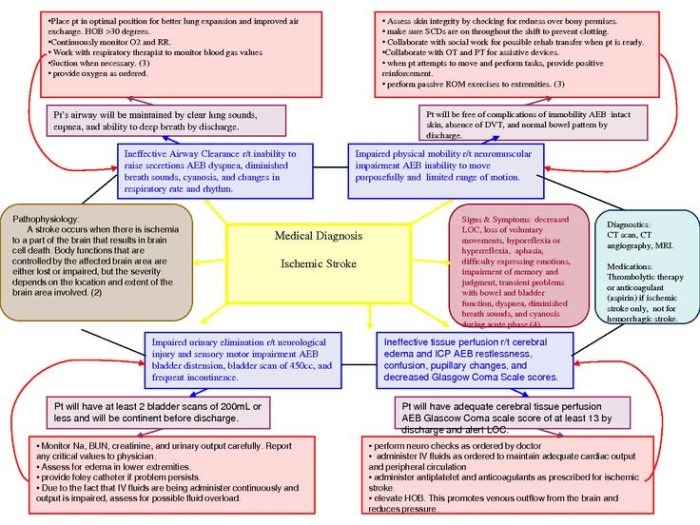Copd with pneumonia hesi case study – This comprehensive case study explores the intricate relationship between COPD and pneumonia, delving into the pathophysiology, risk factors, and clinical presentation of these prevalent conditions. Through a detailed analysis of a real-world case, we unravel the challenges faced by healthcare professionals in managing this complex comorbidity, highlighting the crucial role of nursing interventions and patient education.
COPD, a chronic respiratory disease characterized by airflow limitation, affects millions worldwide. Pneumonia, an infection of the lung tissue, poses a significant threat to COPD patients, increasing their risk of hospitalization and mortality. Understanding the interplay between these conditions is essential for optimizing patient outcomes.
COPD Overview

COPD (Chronic Obstructive Pulmonary Disease) is a progressive respiratory disease characterized by airflow limitation that is not fully reversible. It is caused by chronic inflammation and structural changes in the airways and lungs, leading to difficulty breathing.
Pathophysiology of COPD
COPD develops from a complex interplay of genetic and environmental factors. Cigarette smoking is the primary risk factor, accounting for up to 90% of cases. Other risk factors include exposure to air pollution, occupational dusts and chemicals, and genetic predisposition.
Prevalence and Impact of COPD
COPD is a major global health problem, affecting over 250 million people worldwide. It is the third leading cause of death from non-communicable diseases, with an estimated 3 million deaths annually. COPD significantly impacts individuals’ quality of life, leading to disability, reduced exercise capacity, and increased risk of cardiovascular events.
Pneumonia Overview
Pneumonia is an infection of the lung tissue caused by bacteria, viruses, or fungi. It can range from mild to severe, and in severe cases, can be life-threatening.
Causes and Risk Factors of Pneumonia
Pneumonia can be caused by various microorganisms, including Streptococcus pneumoniae, Haemophilus influenzae, and Mycoplasma pneumoniae. Risk factors for pneumonia include advanced age, weakened immune systems, chronic respiratory conditions (such as COPD), smoking, and alcohol abuse.
Clinical Presentation and Diagnosis of Pneumonia
Pneumonia typically presents with symptoms such as cough, fever, chills, shortness of breath, and chest pain. Physical examination may reveal decreased breath sounds, crackles, and consolidation. Diagnosis is confirmed through chest X-ray and sputum culture.
COPD with Pneumonia Comorbidity: Copd With Pneumonia Hesi Case Study

COPD and pneumonia are common comorbid conditions, with COPD patients being at increased risk of developing pneumonia. The presence of COPD exacerbates the severity and outcomes of pneumonia due to impaired lung function and increased susceptibility to infection.
Increased Risk of Pneumonia in COPD Patients
COPD patients have several factors that increase their risk of pneumonia, including:
- Impaired mucociliary clearance
- Altered immune function
- Increased airway inflammation
- Frequent use of corticosteroids
Impact of Pneumonia on COPD Outcomes, Copd with pneumonia hesi case study
Pneumonia in COPD patients is associated with worse outcomes, including:
- Increased mortality
- Prolonged hospital stays
- Increased risk of COPD exacerbations
- Reduced quality of life
Q&A
What is the primary risk factor for pneumonia in COPD patients?
Impaired mucociliary clearance, a defense mechanism that removes pathogens from the lungs, is a major risk factor for pneumonia in COPD patients.
How does pneumonia impact COPD outcomes?
Pneumonia can exacerbate COPD symptoms, lead to acute exacerbations, and increase the risk of hospitalization and mortality.
What are the key nursing interventions for COPD patients with pneumonia?
Nursing interventions focus on respiratory support, infection control, patient education, and symptom management, aiming to prevent complications and promote recovery.